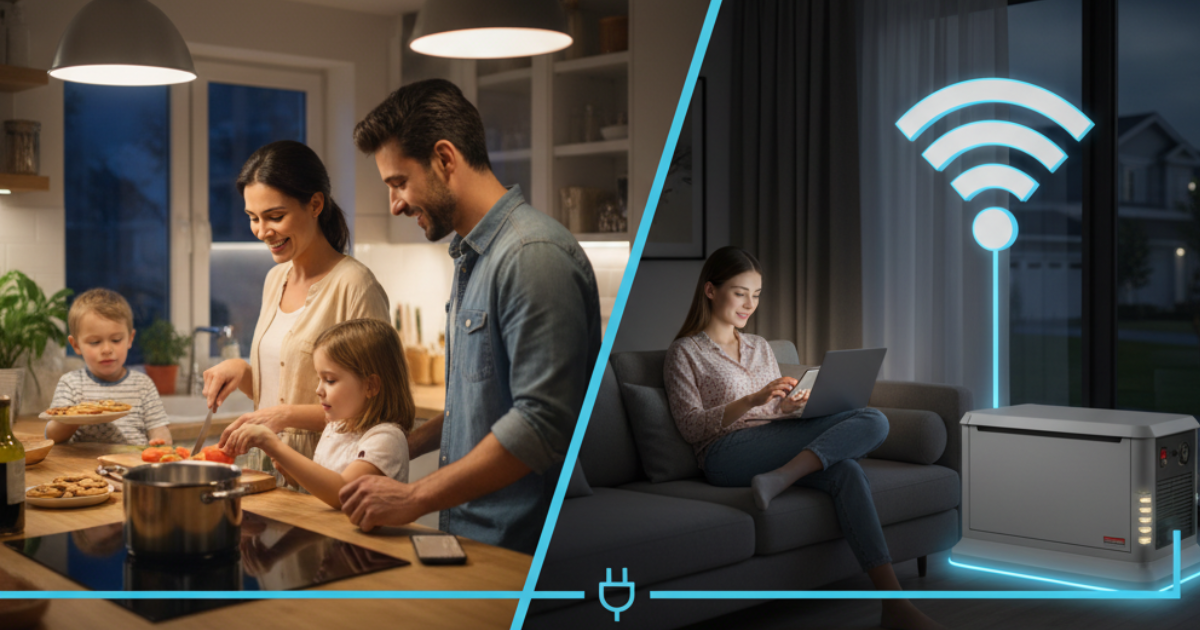More and more households are turning to clean energy, especially when outages or rising utility costs create added stress. Solar generators are becoming a favorite because they deliver quiet, reliable, and sustainable backup power. Still, using one safely with everyday appliances takes a little bit of know-how. Each device draws its own wattage, creates different surge levels, and needs proper load management. Understanding these details protects your appliances and helps your generator last longer. This guide covers the essentials, from checking wattage, avoiding overloads, to setting up safe connections. This way, you would be able to use your solar system with confidence in any situation.
Understand How Solar Generators Power Your Home Essentials
Solar generators store energy collected from sunlight, convert it into usable power, and deliver electricity to your appliances through a battery and inverter system. These machines operate without fumes or noise, making them ideal for indoor use.
They rely on three major components that determine how well they run your appliances. Understanding these parts helps prevent overload issues and keeps your system stable.
Battery Capacity Determines Runtime
Battery capacity measures how long your appliances run on stored energy. It is expressed in watt-hours, which indicate the total usable power inside the battery.
A 1,000Wh device can run multiple small appliances for several hours. A larger fridge or high-watt tool drains the battery faster, reducing operating time significantly. Always calculate runtime before relying on your generator during emergencies.
Inverter Size Defines Maximum Load
The inverter transforms stored energy into the AC power your appliances need. Its wattage rating sets the limit for continuous appliance usage.
If your inverter supports 1,500 watts, your connected appliances must remain under that limit. High-watt devices, such as microwaves or kettles, may exceed this threshold and trigger safety shutoffs.
Solar Input Affects Your Recharge Speed
Solar input refers to how much energy your panels can deliver back into the generator. Larger solar arrays recharge batteries faster, especially during clear daylight conditions. Slow charging reduces the generator’s ability to support heavier loads over long periods.

Check Appliance Wattage Before Connecting Anything
Every appliance has two power requirements: running watts and starting watts. The running wattage represents its constant demand, while starting wattage covers the surge during power-on.
Surges can reach two or three times the normal running load, especially with devices containing compressors or motors. Understanding these surges prevents tripped systems and equipment damage.
Common Wattage Examples
-
LED lamps usually require 5–10 watts.
-
Refrigerators often need 150–200 watts, but their surge may exceed 1,000 watts.
-
Televisions range from 80–200 watts.
-
Microwaves may draw 700–1,200 watts.
-
Laptops typically use 50–80 watts.
Before powering anything, read the appliance label or consult its manual. Accurate wattage knowledge ensures your generator handles the required load safely.
Match Appliance Load to Your Generator’s Capabilities
Using your generator safely requires careful load calculations. Three essential guidelines help protect your system from damage and prevent unexpected power loss.
Keep Total Running Watts Below the Inverter Rating
You must add all simultaneous appliance loads and compare them with the inverter’s maximum output. Exceeding that limit may trigger immediate shutdowns.
Calculate Expected Runtime Based on Battery Size
To estimate runtime, divide battery capacity by your appliance load. A 1,000Wh device powering a 300W load runs for roughly three hours.
Lower-watt appliances extend operation time and reduce stress on your system.
Check Surge Power for Motor-Based Appliances
Many home devices require strong starting bursts. Ensure your generator’s surge capacity meets the appliance’s needs. Appliances that exceed surge capability will fail to start safely.
Prioritize Essential and Efficient Appliances
Solar generators perform best with low-watt or energy-efficient appliances. Choosing the right combination allows longer runtime and safer conditions during extended outages.
Best Appliances for Solar Usage
-
LED lighting improves efficiency and reduces battery drain.
-
Inverter refrigerators run smoothly with lower overall wattage.
-
Fans, routers, and laptops operate comfortably on modest solar setups.
-
Medical devices like CPAP machines perform reliably under stable loads.
Avoid Heavy-Duty Electrical Heaters
Devices such as space heaters, kettles, irons, and hairdryers consume excessive power. These appliances quickly overload most solar systems due to extremely high wattage demands.
Use Proper Cords, Strips, and Safe Connectors
Electrical safety matters as much as wattage understanding. Using appropriate cables prevents overheating, reduces fire risks, and protects your generator from strain.
Use High-Quality Extension Cords
Only choose grounded, heavy-duty cables designed to handle generator loads. Cheap or thin cords may overheat, especially under continuous usage.
Install Surge-Protected Power Strips
A surge-protected strip shields sensitive appliances from fluctuations. These protections ensure steady power flow during sudden load changes.
Avoid Chained Power Strips
Multiple stacked strips create dangerous heat buildup. Stick to one high-quality strip per cord for safe and stable operation.
Prevent Overload by Managing Your Appliances Wisely
Solar generators usually include safety shutoff features. Having said that, repeated overloads weaken components over time and shorten the lifespan of the equipment.
Recognize Warning Signs of Overload
Watch for indicators like flickering lights, hot cords, unusual fan noise, or sudden power loss. These warning signals tell you that your load exceeds safe limits.
Turn Appliances On One at a Time
This method prevents sudden surges and reduces system stress. Heavy appliances may cause immediate overload when switched simultaneously.
Use DC Outputs Whenever Possible
DC ports use power more efficiently because they bypass the inverter. Devices like fans and LED lights normally provide dedicated DC options.
Consider a Transfer Switch for Home Integration
Some homeowners prefer connecting generators to essential household circuits. This option requires a manual transfer switch installed by a licensed electrician.
A transfer switch allows you to power lights, outlets, or fridges through your home electrical panel without hazardous backfeeding. It offers safer operation and smoother transitions during outages. We recommend the 50A Automatic Generator Transfer Switch.
This setup also minimizes extension-cord clutter and allows structured load management for better safety and convenience.
Running household appliances on a solar generator becomes simple with the right knowledge and thoughtful preparation. Safe operation depends on wattage understanding, proper load management, the right cables, and regular system maintenance.
As more smart devices enter the market, homeowners now explore sustainable energy solutions that blend convenience with reliability. New systems offer impressive efficiency, whether used for daily needs or emergency backup. If you want dependable performance, you may consider options like Nature's Generator, which many households trust for long-term resilience.
Modern setups now rival conventional units and outperform traditional solar power generators in certain situations. When choosing a reliable backup, many homeowners prefer a power generator for home with efficient storage and strong surge protection.













